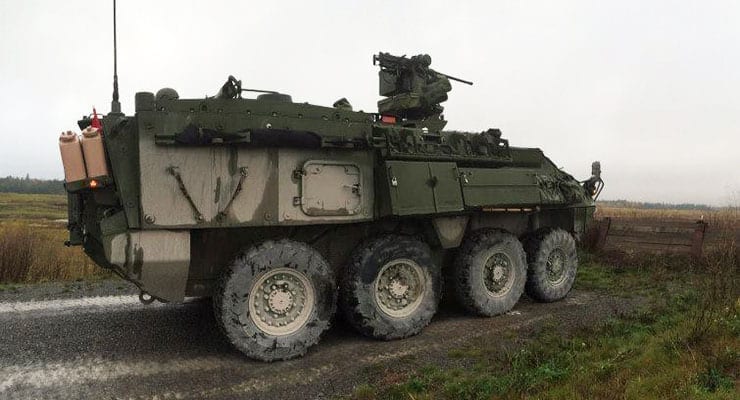The U.S. Army has extended the submission window for a Request for Information on technologies to support the Chemical Surface Detector (CSD) effort. The response deadline was changed from 23 January 2015 to 30 January 2015.
The program is managed by the Joint Project Manager Nuclear Biological Chemical Contamination Avoidance (JPMNBCCA), part of the Joint Program Executive Office for Chemical and Biological Defense (JPEO-CBD).
Through the RFI, JPMNBCCA is exploring alternate technologies to interrogate and detect and identify contamination via the Nuclear Biological Chemical Sensor Suite for the military’s Stryker Nuclear Biological Chemical Reconnaissance Vehicle (NBCRV).
The CSD is intended to replace the Dual Wheel Sampling System (DWSS), the liquid/ground contamination sampler currently installed on the Stryker NBCRV.
The detector must be ruggedized and provide a near real-time, on-the-move capability to detect and identify Chemical Warfare Agents (CWA), Non-Traditional Agents (NTA), and Toxic Industrial Chemicals (TIC).
The primary system functions of the CSD are to detect/identify and warn personnel. The detection/identification function must continually interrogate the surface, provide data for processing, and apply algorithms to the data to detect and identify the contaminant which is present.
Further details are available via Solicitation Number: W911SRCSD.


